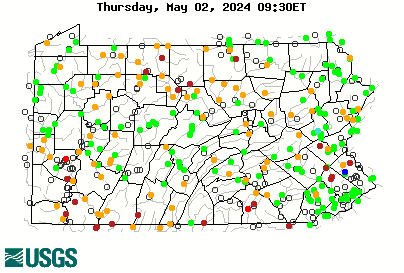My first rooster capes were #3s from Metz. This was 32 years ago. They were beautiful capes, but the thick stems caused the hackle to spin or roll while winding. I then went to Whiting and Herbert hackle, which roll onto dry flies easily. I have recently wondered if Metz hackle still has that tendency to roll. Any of you own the newer Metz capes?
You are using an out of date browser. It may not display this or other websites correctly.
You should upgrade or use an alternative browser.
You should upgrade or use an alternative browser.
Metz Hackle.
- Thread starter Billems
- Start date
GANGGREEN
Active member
- Joined
- May 26, 2016
- Messages
- 208
Oddly, some of the real hackle nuts are always looking for the older Metz capes and I'm not sure that the newer ones are held in very high regard. So many options out there though. Collins capes are/were nice and VERY economical, but he's done producing hackle (he might still have some limited inventory). Some of the smaller guys like Sideling Hill and Riseform are producing some decent stuff and Whiting/Hebert are just incredible, though often quite pricey. I recently purchased a Beaverkill cape, which is a Whiting product that he claims is from the old Catskill genes (that may be true, but these don't resemble the old Catskill Darbee/Fries stuff hardly at all) and they are actually quite reasonably priced. Sorry to ramble and to not really answer your question though.
What do they like about the old Metz capes?Oddly, some of the real hackle nuts are always looking for the older Metz capes,,,
Is it for tailing fibers?
dudemanspecial
Well-known member
Wing tips is my guess.What do they like about the old Metz capes?
Is it for tailing fibers?
Tigereye
Well-known member
I have some older ca 1980s Metz capes. The colors are great. Especially the gingers and coachman brown. The backs of the feather keeps its color for the most part and not a lighter or muted shade as in most of todays feathers. Excellent tailing as mentioned above. I still use the grizzly instead of CDL. You also had a miriad of sizes in a neck. Though the most you would get is about 2 flies per feather. The feathers were short and not so uniform barbells throughout the feather.
Some feathers do have a tendency to roll.
With the onset of Whiting hundred packs, the value couldn't be beat. Though the colors are not as crisp. All in all a better value.
Some feathers do have a tendency to roll.
With the onset of Whiting hundred packs, the value couldn't be beat. Though the colors are not as crisp. All in all a better value.
GANGGREEN
Active member
- Joined
- May 26, 2016
- Messages
- 208
I tied these bivisibles today with a newer furnace Metz saddle hackle. There's certainly nothing wrong with it, but for what they get for them, I think that there are some better bargains out there that tie at least as well.
Attachments
Last edited:
Before Metz most of the necks available at flyfishing shops were widely available and much came from India. Various breeds with different patterns and colorations. A fairly wide spectrum of colors, and usually available for handling before buying.
Pick up the neck, flip some of the feathers to check for the spring in the stem and barbels and sizes. Feelings.
The feathers were naturally really triangular.
For a while, breeding the poultry and sustaining strongly reproducing desirable feathers as a filter was done by Bucky Metz.
But what I was told is that George Harvey was greatly involved with making arrangements for Metz to start raising poultry for tying flies.
I was told that he made the arrangements of procuring certain eggs with DNA desired. Came from the upper Mid-West?
The early necks were very good for tyers who didn't need many dozens, but wanted a range of feather selection for making a range of flies to take to the stream.
Also, the selections of desirable colors and the range of feather structures available on each neck made them very attractive. It was easy to pick out different sizes dry fly hackle, wet fly hackles, streamer hackles and other constructions within the flyfishing world.
Some of the stems were easy to use for extended bodies.
Some were used to wrap a body to create segmentation.
Some could have the color strip removed and used for a body wrap. Has that natural lighting in its structure.
Antenna. Legs. Tails - soft and hard - etc.
The long straight hackles of modern fly tying necks allow for ONE feather to wrap around the hook shank to the equivalent of at least THREE feathers wrapped during the old hackle era.
Modern feathers are seemingly very consistent and are definitely strongly appreciated and embraced and serve many needs well, but not all needs.
Different needs for fly construction can highly value the old-style necks and colors.
IMO
Pick up the neck, flip some of the feathers to check for the spring in the stem and barbels and sizes. Feelings.
The feathers were naturally really triangular.
For a while, breeding the poultry and sustaining strongly reproducing desirable feathers as a filter was done by Bucky Metz.
But what I was told is that George Harvey was greatly involved with making arrangements for Metz to start raising poultry for tying flies.
I was told that he made the arrangements of procuring certain eggs with DNA desired. Came from the upper Mid-West?
The early necks were very good for tyers who didn't need many dozens, but wanted a range of feather selection for making a range of flies to take to the stream.
Also, the selections of desirable colors and the range of feather structures available on each neck made them very attractive. It was easy to pick out different sizes dry fly hackle, wet fly hackles, streamer hackles and other constructions within the flyfishing world.
Some of the stems were easy to use for extended bodies.
Some were used to wrap a body to create segmentation.
Some could have the color strip removed and used for a body wrap. Has that natural lighting in its structure.
Antenna. Legs. Tails - soft and hard - etc.
The long straight hackles of modern fly tying necks allow for ONE feather to wrap around the hook shank to the equivalent of at least THREE feathers wrapped during the old hackle era.
Modern feathers are seemingly very consistent and are definitely strongly appreciated and embraced and serve many needs well, but not all needs.
Different needs for fly construction can highly value the old-style necks and colors.
IMO
Last edited:






